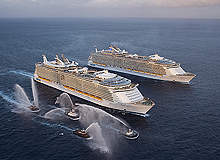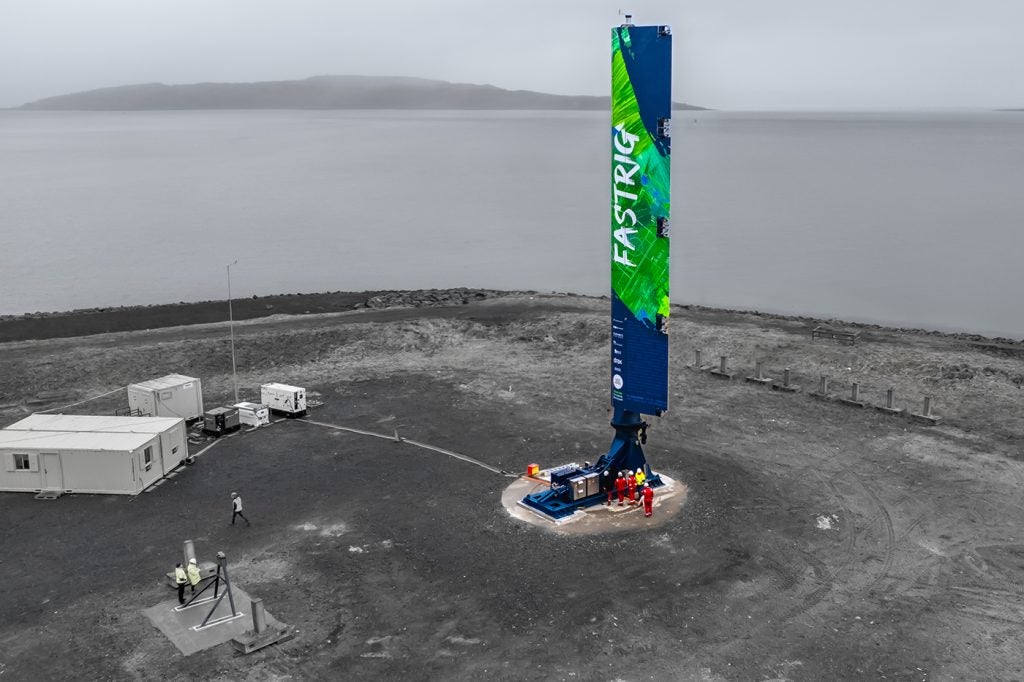
According to the international maritime organisation (IMO), the world fleet of ships of 100GT and above numbers more than 100,000. Of that, according to the cruise lines international association (CLIA), there are about 230 cruise ships engaged in international shipping. The IMO estimates international shipping contributes about 2.7% of global CO2 emissions, so emissions from cruise liners start to look like a small proportion.
Even so, cruise operators are taking various steps to reduce their emissions and present a more eco-friendly image. Many of these steps are small, and tend to focus on energy efficiency.
That’s because, as Bud Darr, the CLIA’s director of environmental and health programmes explains, “The reality is that most of our shipboard energy needs are being met by way of consuming fossil fuels. Like most of society, this results in anthropogenic contribution to greenhouse gas loading in the atmosphere.”
Darr cites the following as examples of areas where these efficiencies are being derived:
- New engine designs
- Hull designs and anti-fouling technology
- Heating, air-conditioning and refrigeration systems
- LED and compact fluorescent lighting
- Itinerary and arrival/departure changes
- Shore power installations
- Solar panels
Here’s a cross-section of some of the measures operators are now taking.
New engines
Allure of the Seas and Oasis of the Seas, run by Royal Caribbean, have engines using common-rail injection, a variant of direct fuel injection that gives better load control and combustion than older diesel engines, reducing NOX emissions.
How well do you really know your competitors?
Access the most comprehensive Company Profiles on the market, powered by GlobalData. Save hours of research. Gain competitive edge.

Thank you!
Your download email will arrive shortly
Not ready to buy yet? Download a free sample
We are confident about the unique quality of our Company Profiles. However, we want you to make the most beneficial decision for your business, so we offer a free sample that you can download by submitting the below form
By GlobalDataRoyal Caribbean subsidiary company, Celebrity Cruises, use them too. Meanwhile, Viking River’s ship, Viking Legend, is fitted with diesel-electric hybrid engines, which are said to use 20% less fuel than comparable diesel-only ships.
At the exhaust end, in 2011, Royal Caribbean is installing an exhaust gas cleaning system from Ecospec Global Technology on its ship Independence of the Seas. In a 2009 test on a tanker, the electrolysis-based technology was said to have removed 99% of the SOX, 66% of the NOX and 77% of the CO2 from its exhaust.
Also, Holland America Lines (HAL) installed a seawater scrubber system on its Zaandam ship.
Early tests are said to show it removes up to 75% of SO2 and 57% of the particulate matter emitted by the ship’s diesel.
Fuels-wise, Carnival is using low-sulphur fuel on voyages in environmentally sensitive areas, such as glacier bay national park in Alaska and Venice, and within 3nm of the California shoreline.
Optimised hulls and anti-foul coatings
More hydrodynamically efficient hulls, with a protruding bulb at the bow and a ducktail design at the stern, are said to reduce resistance and give energy savings of up to 15-20%. ‘Foul release’ silicone hull coatings also cut resistance by lowering friction and resisting barnacle formation on the hull. Disney Cruise Lines claims a first here, on its Disney Wonder, and Carnival, Celebrity and MSC Cruises use it too.
Heating, aircon and refrigeration
Carnival uses heat generated by its ships’ engines to heat water instead of relying on the boilers. It has also been testing an oil additive in chillers onboard the Carnival Legend, which is expected to reduce energy used in the chillers circuit by 10%. On MSC’s Poesia, passengers’ cruise cards double as the on / off switch for electricity and air-conditioning in their cabins.
Royal Caribbean ships have tinted windows to keep the ships cooler and reduce the load on aircon systems, as do Cunard’s new Queen Elizabeth and Celebrity vessels. Celebrity also uses chilled river rocks instead of ice in its buffets to cut the amount of water and energy needed to turn the water into ice.
In addition, most Celebrity Millennium-class and Royal Caribbean Radiance-class ships can use Alaskan and Baltic seawater to chill water, instead of running aircon compressors, saving about 4-5t of fuel per ship per day when operating in these waters.
LED and fluorescent lighting
Across its fleet Carnival is fitting compact fluorescent and LED bulbs that it says will potentially save about $100,000 annually in energy costs per ship. Cunard’s Queen Elizabeth uses them as well, plus twilight sensors that switch deck lighting off at dawn, and on again at dusk.
Arrivals / departures
A number of operators including Carnival and RCL tweak their arrival and departure times at ports according to routes, currents and weather patterns, to reduce fuel consumption.
Onshore power
Princess Cruises says it pioneered this, and that nine of its ships can ‘plug in’ to hydroelectric power when docked in Seattle, Juneau and Vancouver, and solar power at Los Angeles. HAL’s Westerdam, Noordam and Oosterdam ships can also exploit this ‘cold ironing’ at Seattle, and Norwegian Cruise Line (NCL) vessels at Los Angeles.
Solar panels
Celebrity is installing solar panels on its newest ships for powering onboard components such as LED lights. The Celebrity Solstice launched with 80 panels; Celebrity Equinox was built with 216. The Solstice’s panels power systems such as elevators, and while Celebrity accepts solar is not currently a cost-effective addition, it says as prices decrease, the onboard infrastructure will be in place to carry more of the technology.
There are various other measures such as regular cleaning of hulls and propellers, and recycling used cooking oil in port into biodiesel, and taken together, these changes add up to a measurable reduction in cruise liners’ environmental impact.
For example, according to its 2010 Stewardship Report, Royal Caribbean (which owns Celebrity, among others) cut its fuel consumption by 4.7%, and greenhouse gas emissions by 5.5%, per average passenger cruise day on 2009 levels. Since 2005, it says it has cut fuel consumption by about 13.5% and is committed to cutting emissions by one-third on 2005 levels per APCD by 2015.
Meanwhile Carnival – which owns HAL, Cunard and Princess, among others – says in its most recent sustainability report 2009 it cut fuel consumption by 1.5% on 2008 levels and aims to cut CO2 emissions from a 2005 level of 173g/nm to 151g/nm by 2015.
These sets of figures may not be directly comparable, and critics may argue that cruise operators still have some way to go, but it does give an indication of the efforts the industry is going to, and continues to go to.







